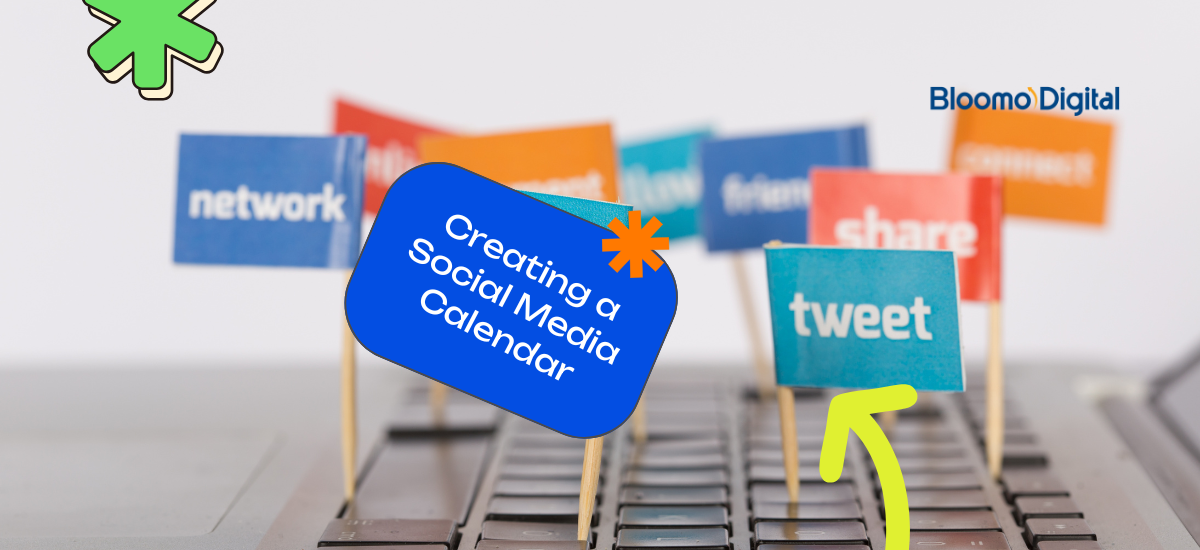Managing social media for your business can feel overwhelming. Whether you run a small shop, a local service, a growing startup, or a larger operation, juggling platforms, content types, and posting schedules is a challenge. That’s where a social media calendar can help.
Think of a social media calendar as your roadmap. It keeps your content organized, saves time, and ensures you’re delivering the right message to the right audience. In this guide, we’ll walk you through how to create a social media calendar tailored to your business—step by step. Let’s get started!
Why Your Business Needs a Social Media Calendar
Before we jump into the steps, let’s talk about why a social media calendar is so helpful for businesses of all sizes:
- Consistency: Posting regularly keeps your audience engaged and builds trust.
- Time Savings: Planning ahead reduces last-minute stress.
- Variety: You’ll balance different types of posts, so your feed stays interesting.
- Strategy: Align content with your business goals and upcoming campaigns.
- Collaboration: If you work with a team, everyone knows what’s happening and when.
Whether you’re a solopreneur or managing a team, a calendar makes social media easier and more effective.
Step 1: Set Clear Goals for Your Social Media Calendar
Your calendar’s purpose depends on your goals. What do you want to achieve? Clear goals will guide your content and schedule.
Questions to Ask:
- What’s your main objective? (e.g., brand awareness, website traffic, leads)
- Who’s your audience?
- Which platforms do they use?
- How will you measure success? (e.g., engagement, clicks, followers)
Examples of Goals:
- Grow Instagram followers by 20% in three months.
- Get 500 website visits from social media in one month.
- Maintain a 5% average engagement rate.
With clear goals, you’re ready to pick the right platforms.
Step 2: Choose the Right Social Media Platforms
Not every platform is right for your business. Focus on the ones where your audience is most active.
Platform Overview:
- Facebook: Good for community building and broad audience reach.
- Instagram: Perfect for visuals and younger audiences.
- LinkedIn: Best for B2B and professional networking.
- Twitter: Great for real-time updates and conversations.
- TikTok: Ideal for fun, short videos targeting younger demographics.
How to Choose:
- Research where your target audience spends time.
- Check competitors to see which platforms work for them.
- Match the platform’s strengths with your content type (e.g., videos for TikTok, articles for LinkedIn).
- Start with 1-3 platforms to keep things manageable.
Step 3: Decide on Your Content Types and Themes
A mix of content keeps your audience engaged and makes your brand relatable.
Common Content Types:
- Educational: Tutorials, how-tos, or tips.
- Promotional: Announcements, sales, and product updates.
- Engaging: Polls, quizzes, or interactive posts.
- Entertaining: Memes, quotes, or fun videos.
- User-Generated: Posts from your customers or followers.
- Behind-the-Scenes: Team stories, sneak peeks, or office life.
How to Pick Themes:
Choose 3-5 themes that fit your brand. For example, a local bakery might use themes like baking tips, customer reviews, and seasonal specials.
Example Content Mix:
- Monday: Educational tip or how-to.
- Wednesday: A promotional post.
- Friday: Entertaining or behind-the-scenes content.
This ensures variety while keeping your message consistent.
Step 4: Set Up Your Social Media Calendar
Time to get organized! Use tools like Google Sheets, Excel, or platforms like Trello, Asana, Hootsuite, or Buffer.
What to Include:
- Date and Time: When will the post go live?
- Platform: Where will it be posted?
- Content Type: Is it educational, promotional, or engaging?
- Post Copy: What’s the caption or text?
- Visuals: Add links to images or videos.
- Links and Hashtags: Include URLs or hashtags.
- Call to Action: What do you want your audience to do? (e.g., “Shop now,” “Comment below”)
How to Build It:
- Monthly Overview: Add key dates and events.
- Weekly Breakdown: Plan what to post each day.
- Details: Include captions, visuals, and hashtags for each post.
Example: Use Google Sheets with columns for each detail. Color-code by platform to keep things clear.
Step 5: Plan Your Posting Schedule
How often should you post? The answer depends on your platform and audience. Here are some general guidelines:
- Facebook: 3-5 times a week.
- Instagram: 3-5 times a week, plus daily Stories.
- LinkedIn: 2-4 times a week.
- Twitter: 1-3 times a day.
- TikTok: 2-3 times a week.
Timing Tips:
- Use analytics tools to find when your audience is online.
- Schedule posts for peak times using tools like Buffer or Hootsuite.
Step 6: Create and Curate Content in Advance
Creating content on the fly is stressful. Instead, plan ahead and batch your work.
Tips for Content Creation:
- Dedicate specific days to write captions or design graphics.
- Use tools like Canva for easy, professional designs.
- Batch content so you always have posts ready to go.
Tips for Curation:
- Share industry news or trends.
- Highlight user-generated content (like reviews or photos).
- Repost content from influencers or partners that align with your brand.
Example: Spend one afternoon creating a week’s worth of posts. Use Canva to design and Buffer to schedule.
Step 7: Monitor and Adjust Your Calendar
A calendar is a living document. Check your analytics regularly to see what works and tweak your strategy.
What to Track:
- Engagement (likes, comments, shares).
- Follower growth.
- Website traffic from social media.
How to Adjust:
- Double down on content that performs well.
- Rethink strategies for platforms or posts that underperform.
Example: If your polls get high engagement, post more of them. If LinkedIn isn’t working, adjust your content or posting frequency.
Final Thoughts: Build Your Social Media Calendar Today
Creating a social media calendar takes effort, but it’s worth it. You’ll save time, post consistently, and see better results.
Start with clear goals, choose the right platforms, and plan your content mix. Use tools to stay organized and monitor your performance. With a little planning, your business will thrive on social media.
Ready to get started? Take the first step today and watch your social media presence grow!





